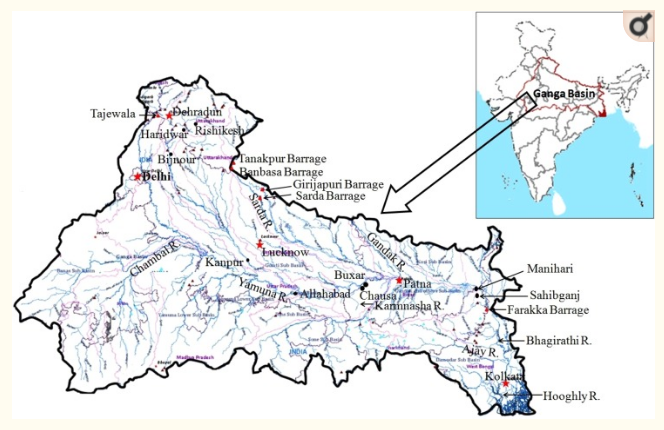Most Indians can easily name the Bengal Tiger as the country’s National Animal. Bny know that the Gangetic River Dolphin (Platanista gangetica gangetica) is the National Aquatic Animal of India?
This dolphin, also referred to locally as Susu in Uttar Pradesh, is a strong indicator of the purity of water because it can only exist in unpolluted fresh water.

Till recent times, from the banks of the Ganges in Varanasi, you could catch sight of these pink-tinged creatures frolicking in their natural habitat.
These water inspectors had certified the river waters as pure so there was no hesitation for people to dip their hands in the river. After all, it had been tested by the very best of nature’s laboratory technicians!
Over the years, this scenario has changed. Rising pollution levels have forced the Susu to abandon this habitat and move upstream with the hope of finding purer waters somewhere. But where?

Unfortunately, the Ganges is today said to be the second most polluted river in the world. Even if these dolphins find clean havens, their population is not safe as Susu are hunted for their oil. Is it any surprise then that today their numbers are down to just 2,000?
The NGO Vikas Evam Shikshan Samiti India (VESS) rallied to support the Governments effort to protect the Susu in and around Varanasi. It initiated a Dolphin Conservation and Education Program with the aim to reach 50,000 students from schools located within a 5 km radius of the river.

The initiative now goes beyond school campuses. Nukkad nataks (street plays), games, and dolphin melas (fairs) are regularly organized for the general public, in particular around areas where fisherfolk reside.
The result is there for all to see. Speak to the people of Varanasi and see how well informed they are today about the Gangetic River Dolphin and its importance.

Students speak with pride about the National Aquatic Animal being in their area as they know that this endemic and charismatic mega-fauna is found only in the Indian subcontinent.
This story is based on Earth Day Network’s Pathways to Green India – Ways to Protect Our Species, Volume III E book





